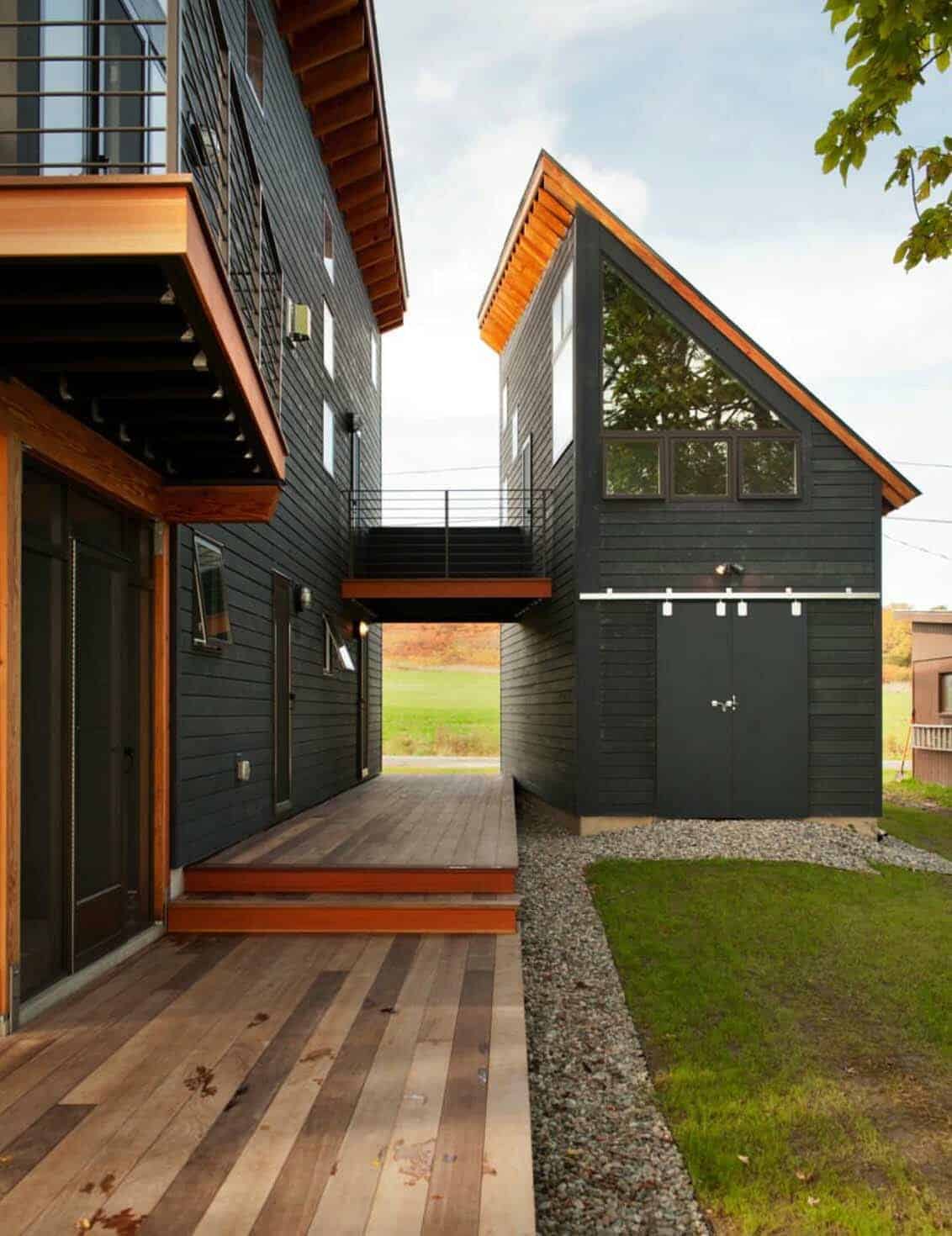
Projector House is a sleek and modern two-story home designed by Cultivation Design Build, located in the Thompson’s Point neighborhood of Charlotte, Vermont. The area is primarily a summer home community, residences own their homes but lease the land. The property had been in the architect’s family for several generations and the architect had grown up here for some time before her family moved.
They kept this home as a family vacation retreat, that is until 2010, when the home unfortunately burned to the ground. The architect’s father had considered selling, but his daughter had just come out of grad school and he instead requested for her to design a brand new home. The angular structure was built on top of the previous home’s foundation. The design was conceptualized in response to the site, a small lot with 100-feet of lakefront, mountain views and closely adjacent properties.
The first level of this 2,600 square foot home boasts an open layout with a double volume ceiling. There are plenty of sleeping areas for guests and private nooks, which includes a loft — accessible via a wooden ladder. A seperate structure is connected to the home by a short breezeway, which offers an art studio. This space can also be used as a guest bedroom.
The name “Projector House” was derived from the dwellings’ main structural attribute: a strict “projection” towards the lake. Floor-to-ceiling windows at the rear of the property directs the gaze towards the bay. Two-inch horizontal Douglas fir boards set 1/4-inch apart along an interior wall helps to enhance this visual effect—forcing the eye towards the view. This also creates a visual barrier between public and private zones.
The “projector” concept magnifies the view while it obscures the periphery, thereby enhancing the strongest assets of the site. The architecture performs in the same manner a cone of vision is used in a drawing – it regulates how much the scene is captured on the page. The design is formalized in relationship to the view.
The lake views are the perspective image or the “picture plane” captured by the projector, the frame of our view, or the frame of the view. The form acts as a “projector” – the closer one gets to the view, the more the house opens up in relationship to it. The bigger the image, the closer one gets to it – thus rendering the peripheral static.
Above: The few windows on the sides and front of the home have been deliberately placed above eye level. When inside the home, you cannot tell how close the neighbor’s house is next door, or that the house was constructed not far from the road. Your focus is centered on the water!
In the summer months the glass wall covering the south facing elevation receives limited direct sun. By mid-morning the heating sun is intercepted by an expansive roof where it travels down the pitch to the west until the early evening, keeping the house cool and breezy all summer.
In the winter, when the sun is lower in the sky, the sun transmits heat through the glass wall until late in the afternoon, heating the concrete floors inside and creating a positive solar gain through the winter months.
What We Love: This idyllic lakefront home features a unique architectural facade and an open and spacious layout. We love how the architect designed this home with passive solar design, which takes advantage of the site, climate, and materials to offer the homeowner’s energy-efficiency. Expansive windows helps to keep visualization focus towards the lake while also keeping the the interiors feeling light and airy.
Readers, what are your thoughts on the design of this home? Do you find the architecture to be unique? Please leave your feedback in the Comments, we love reading your opinions!
Above: Energy-efficient wood stoves and passive solar heat makes this an ideal year-round home for the architect.
Photos: Carolyn Bates

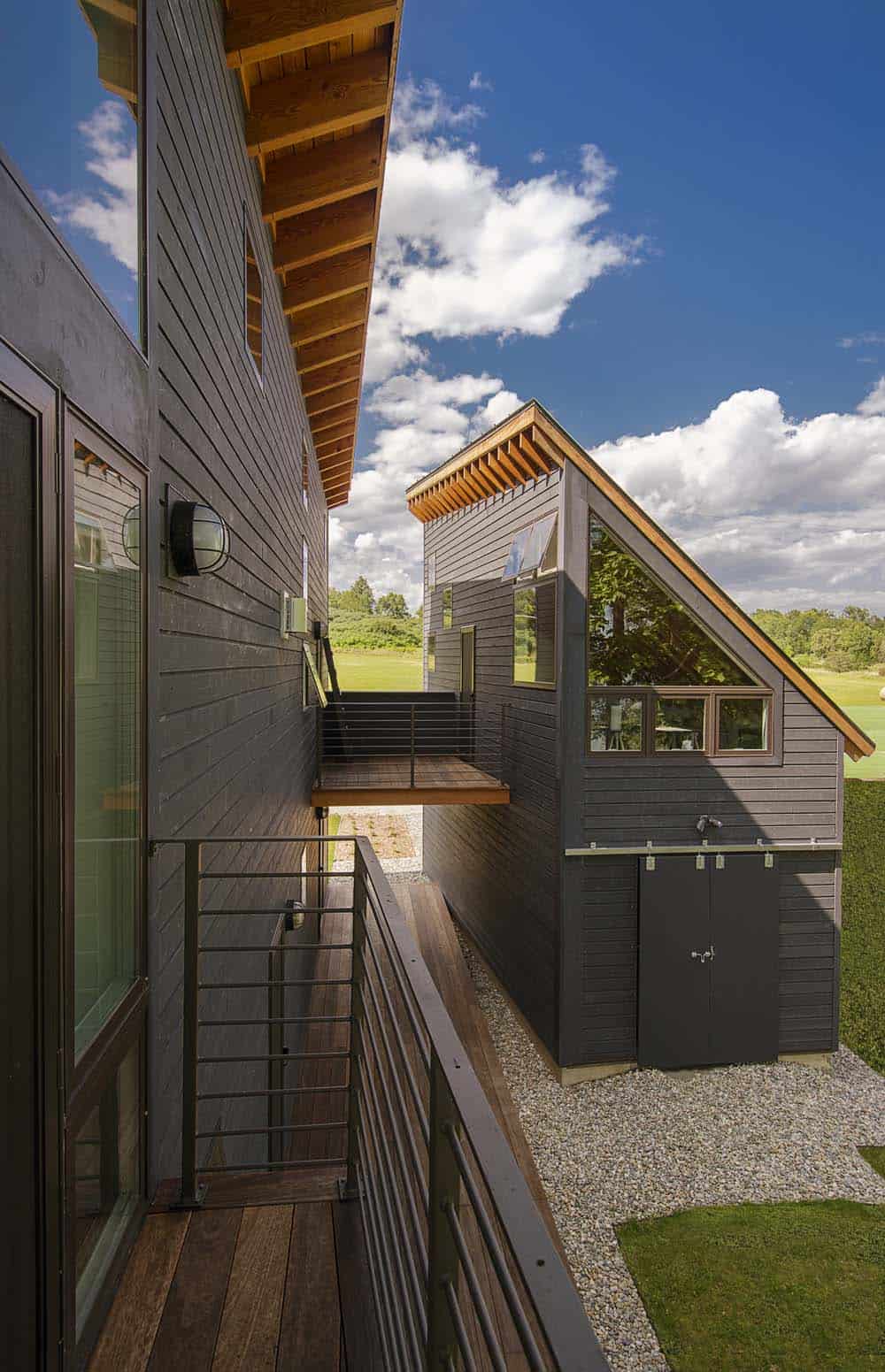
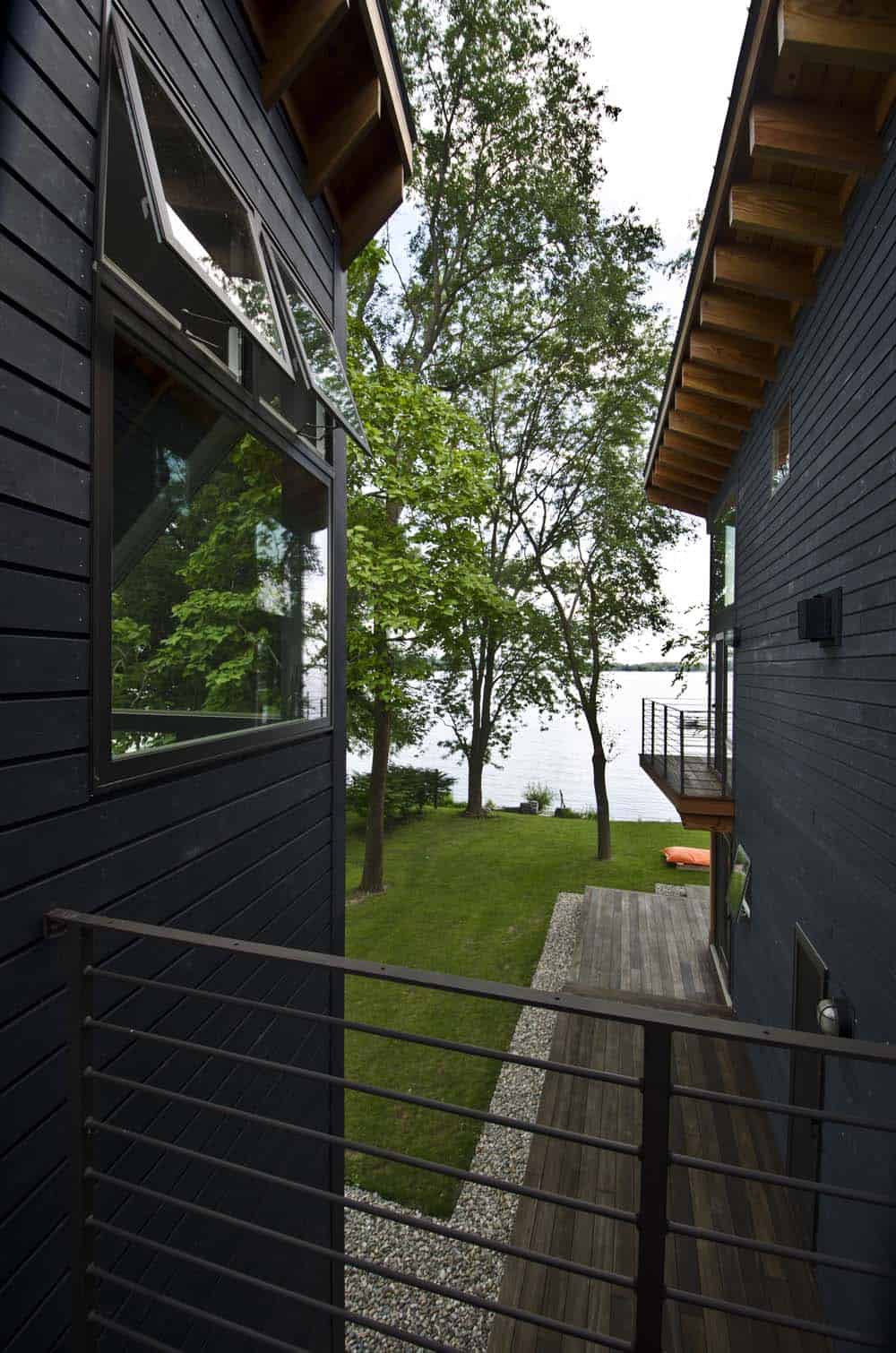
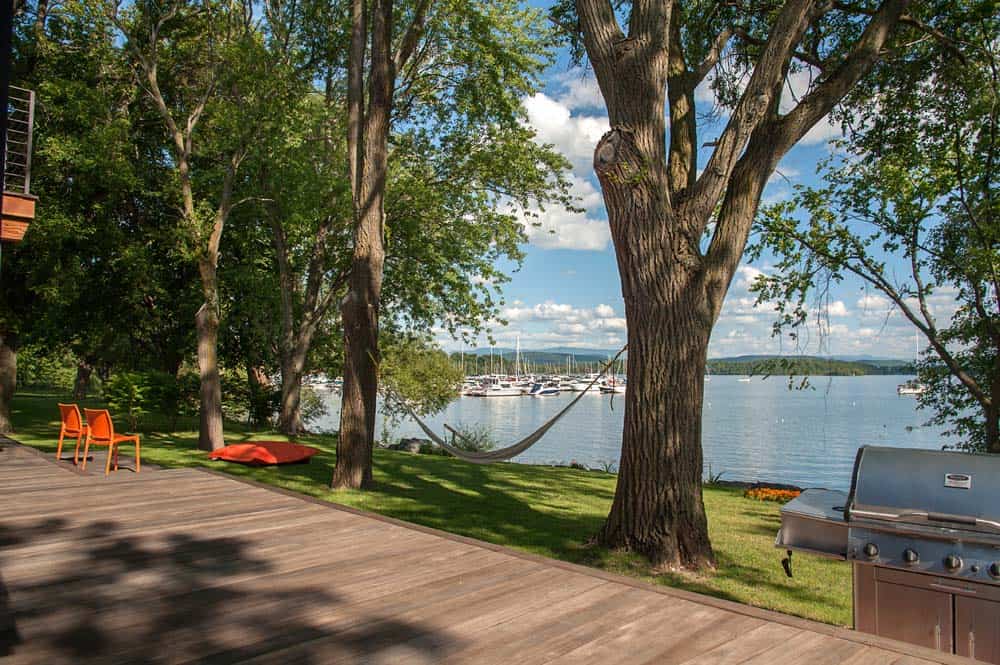


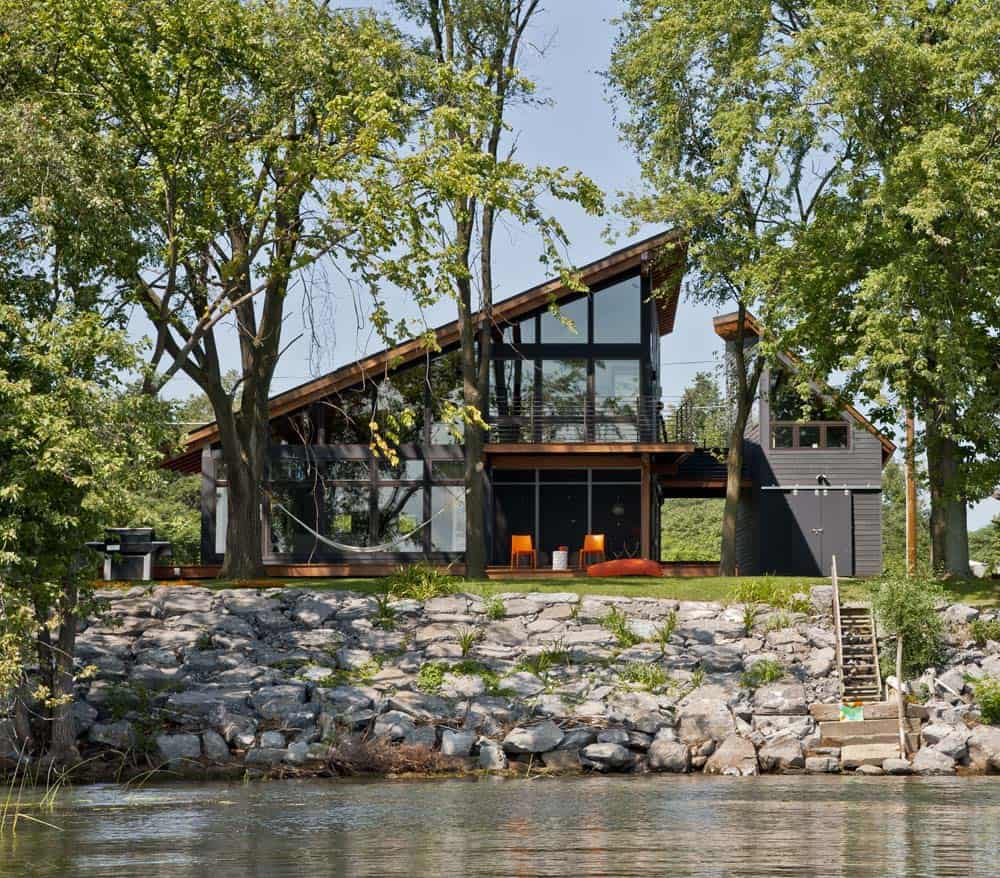
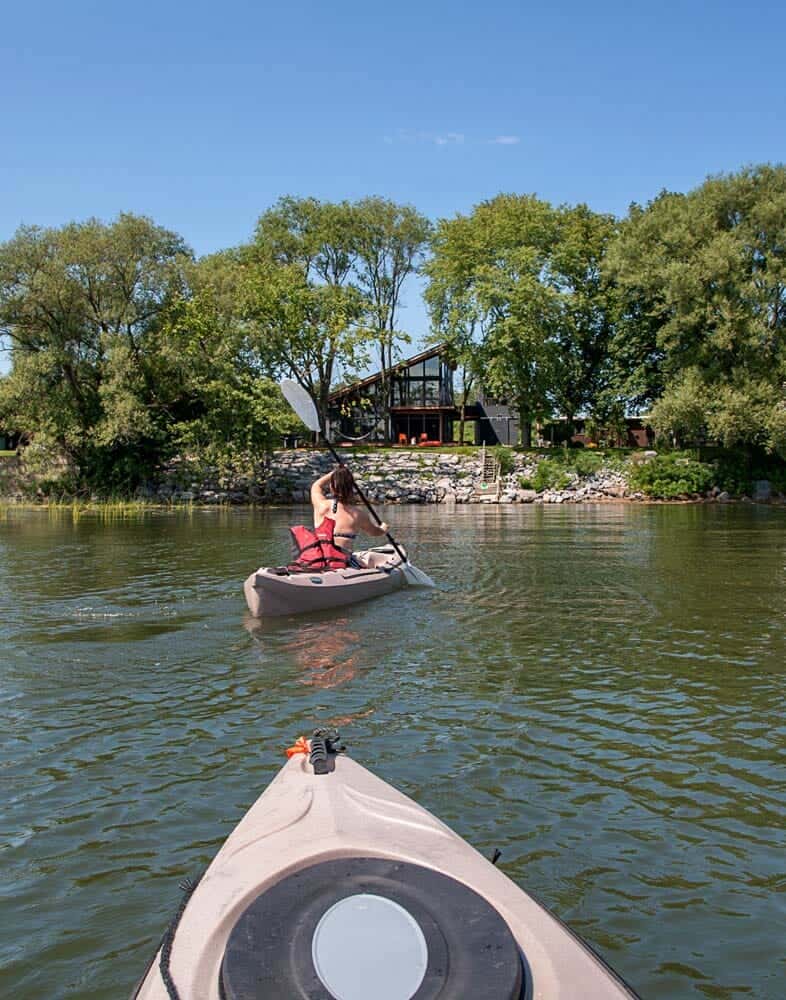
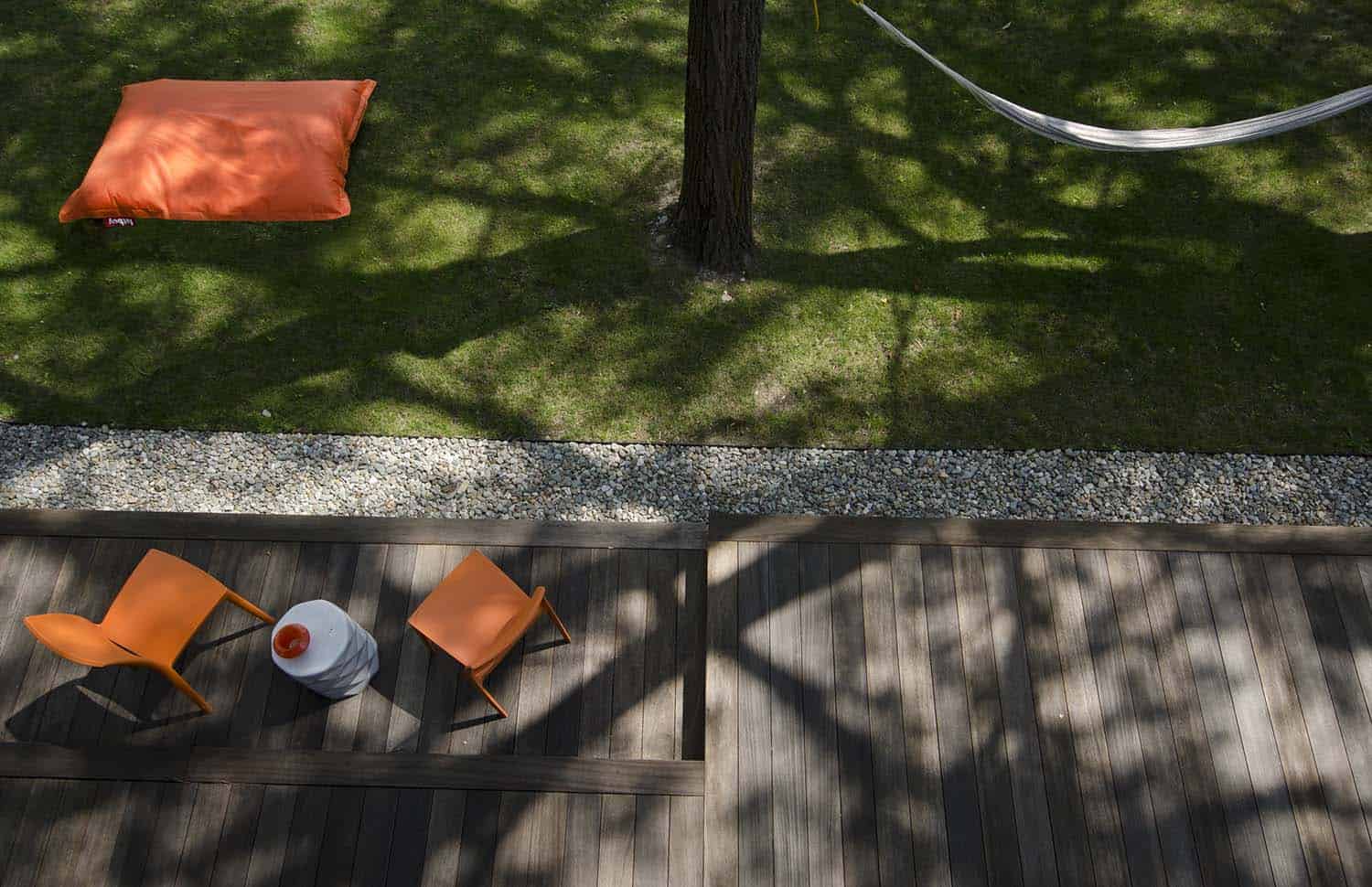
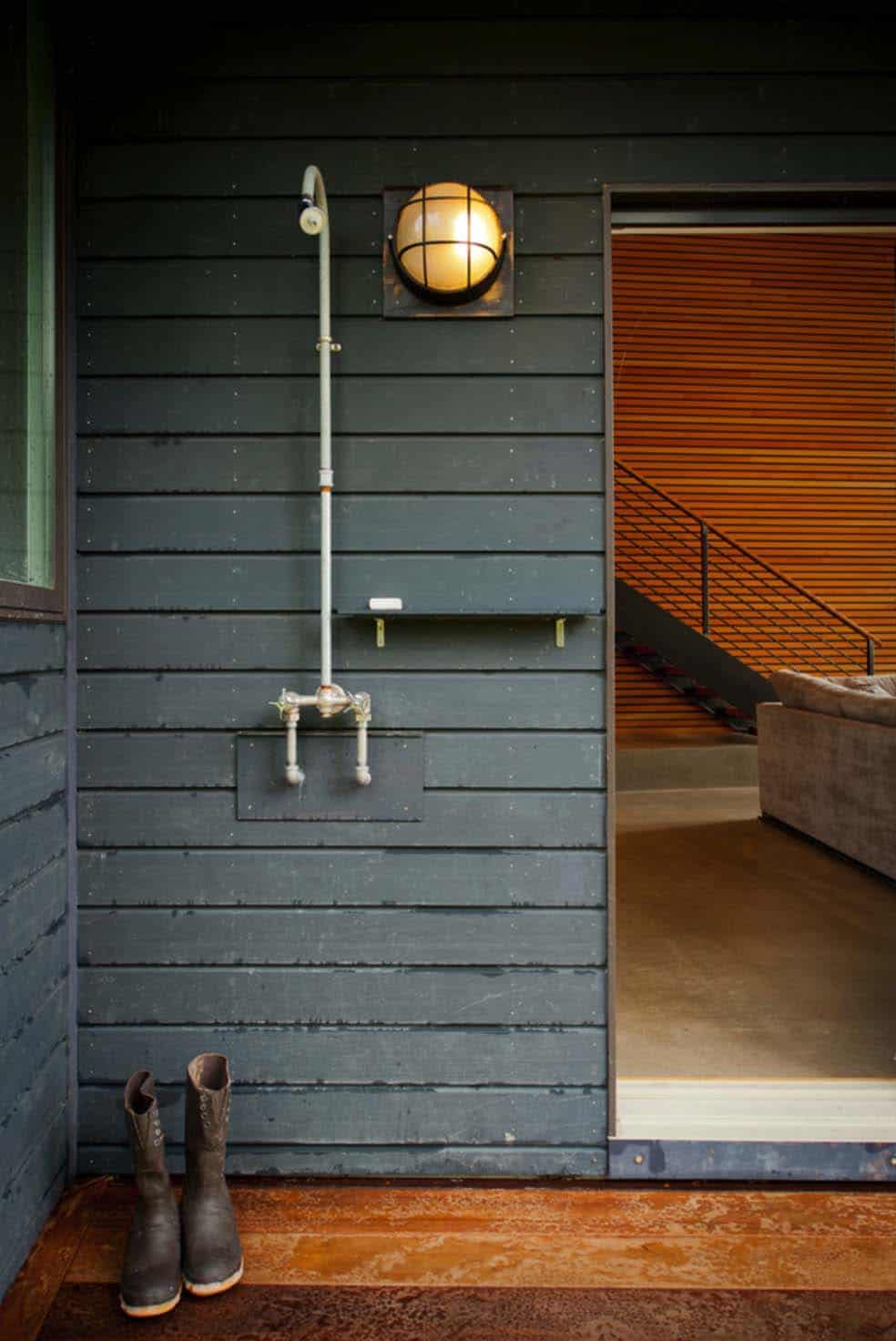
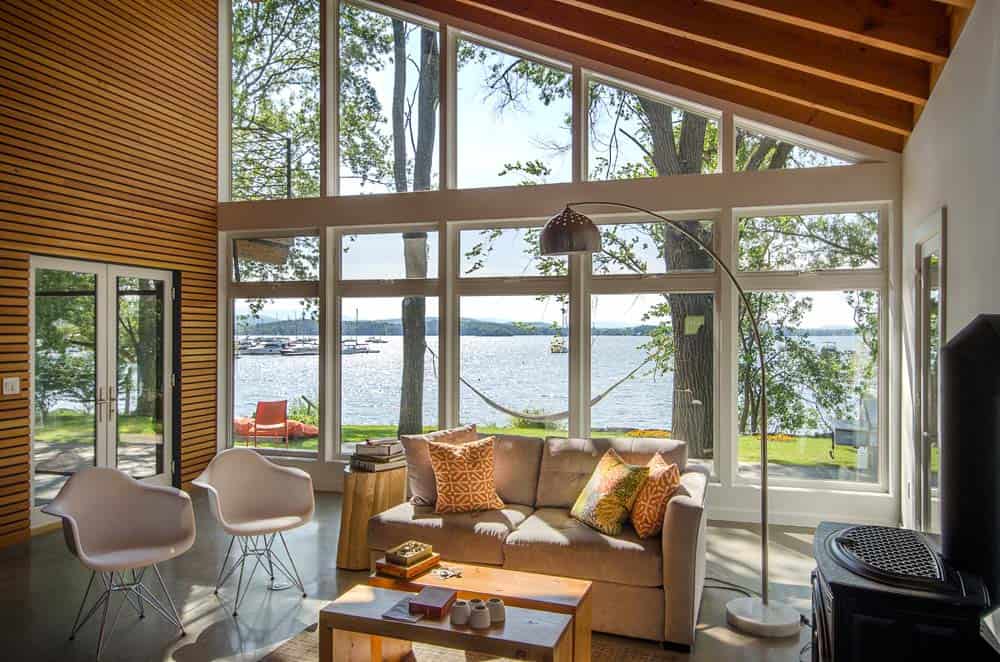
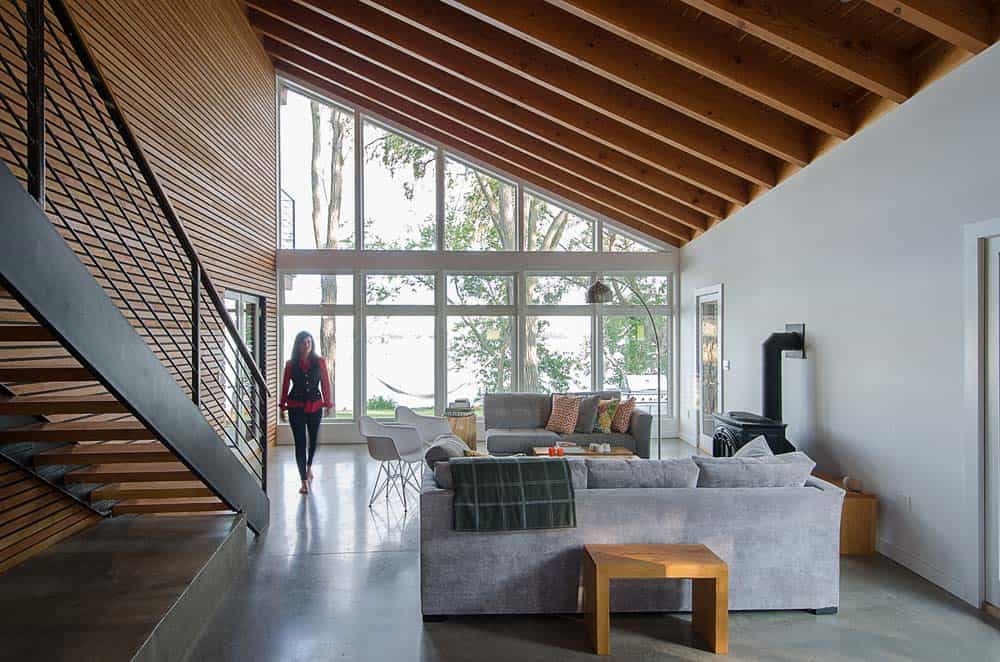

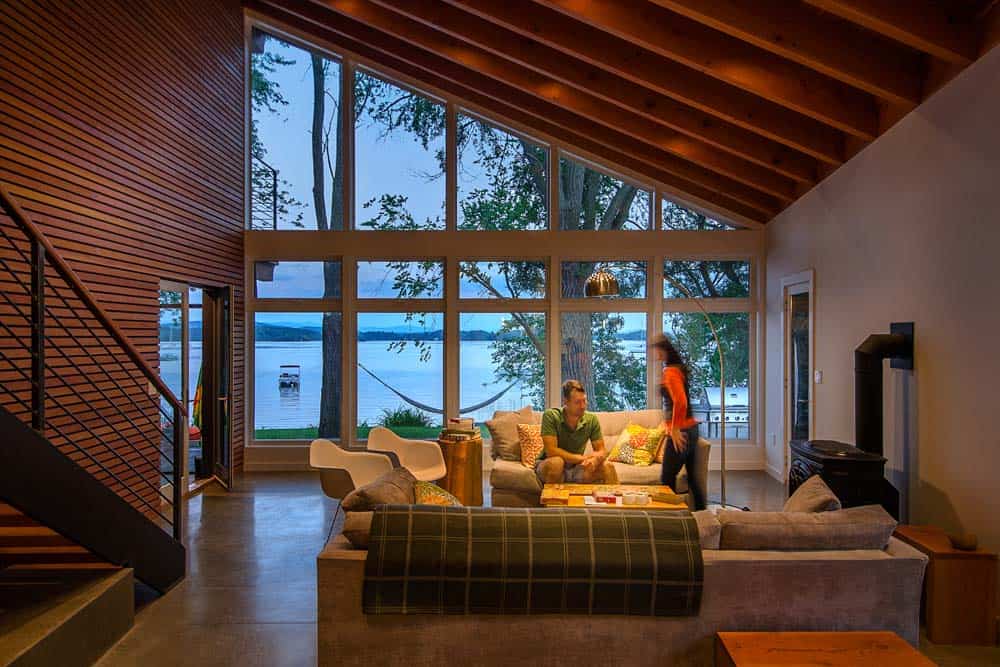
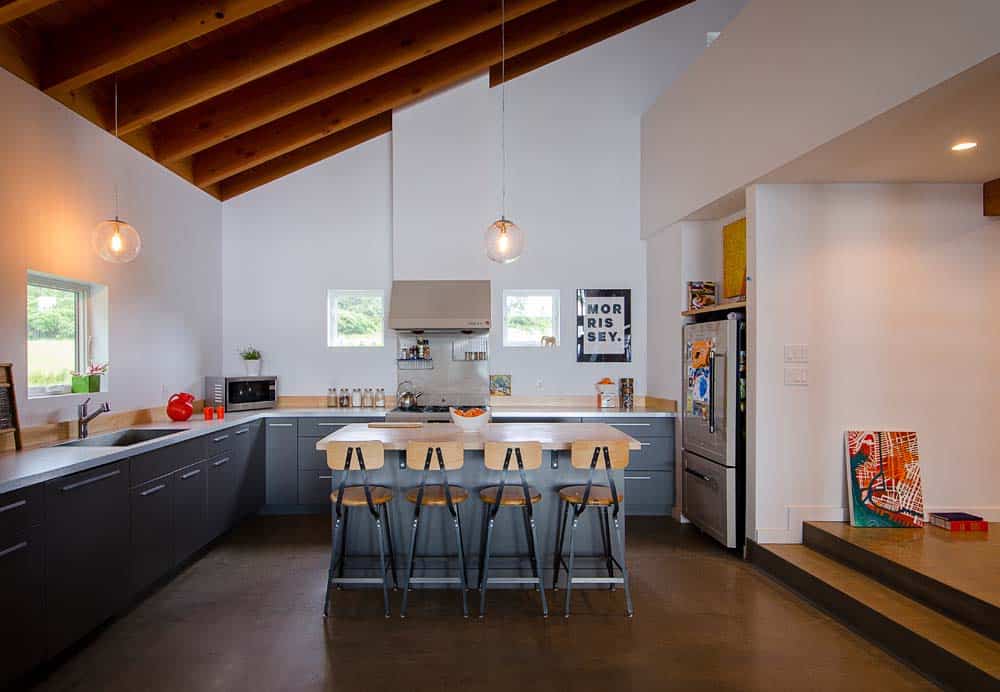
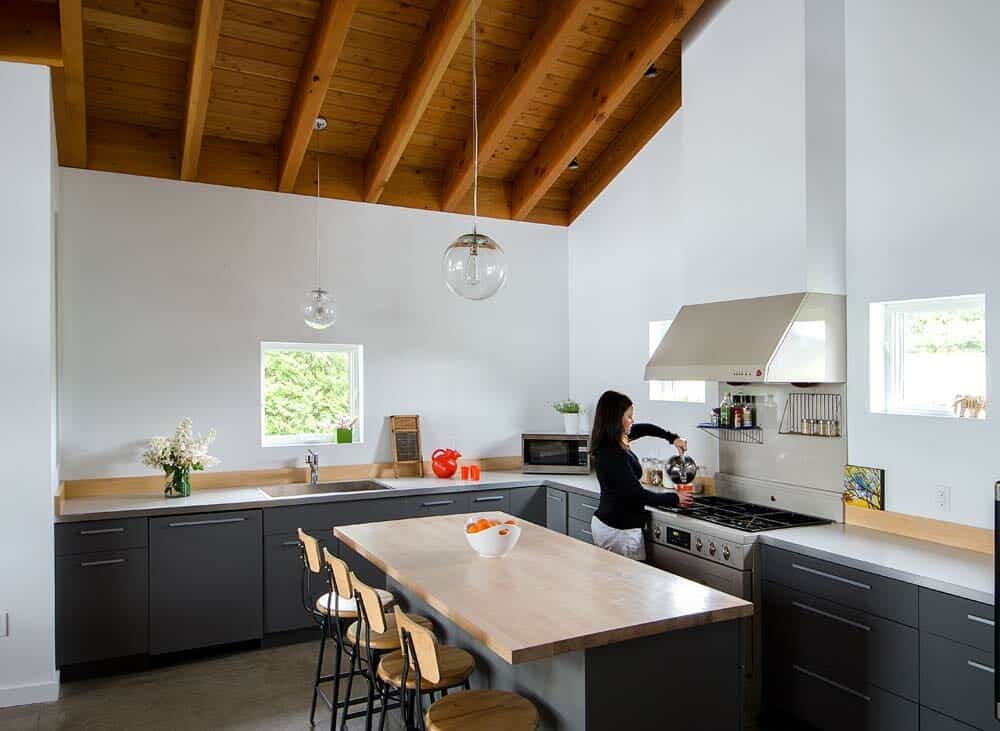

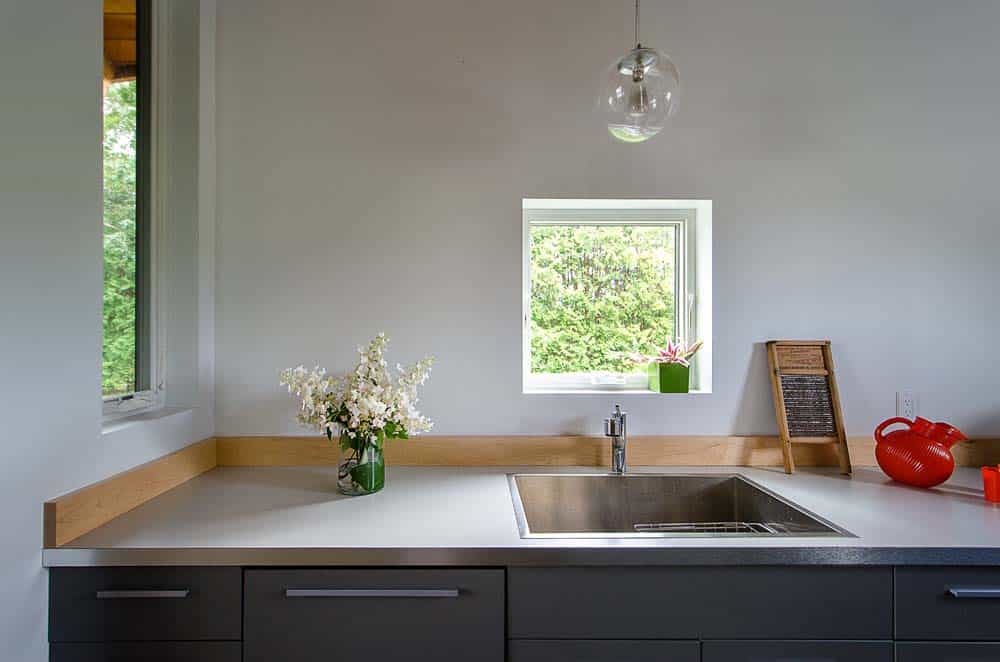


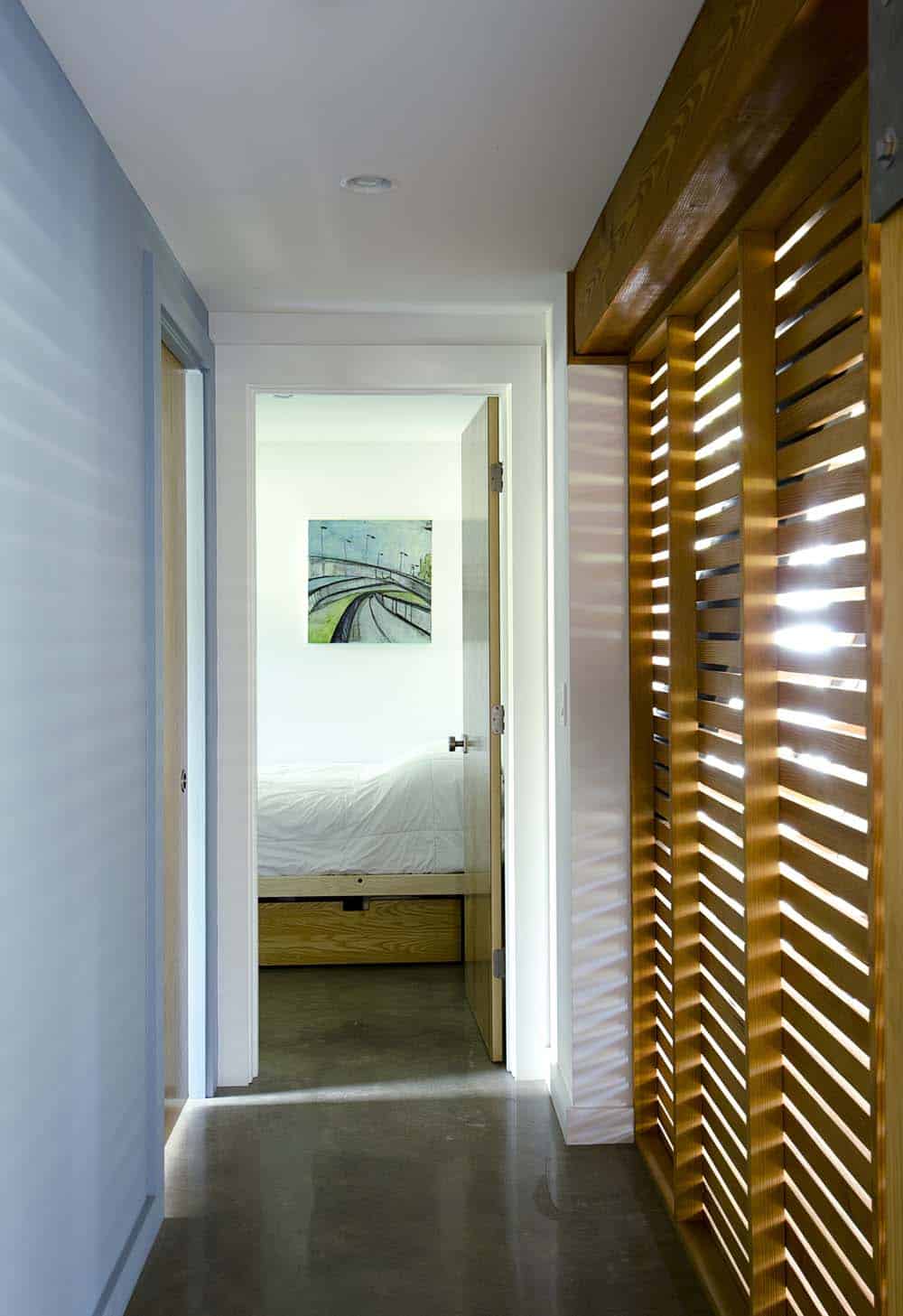
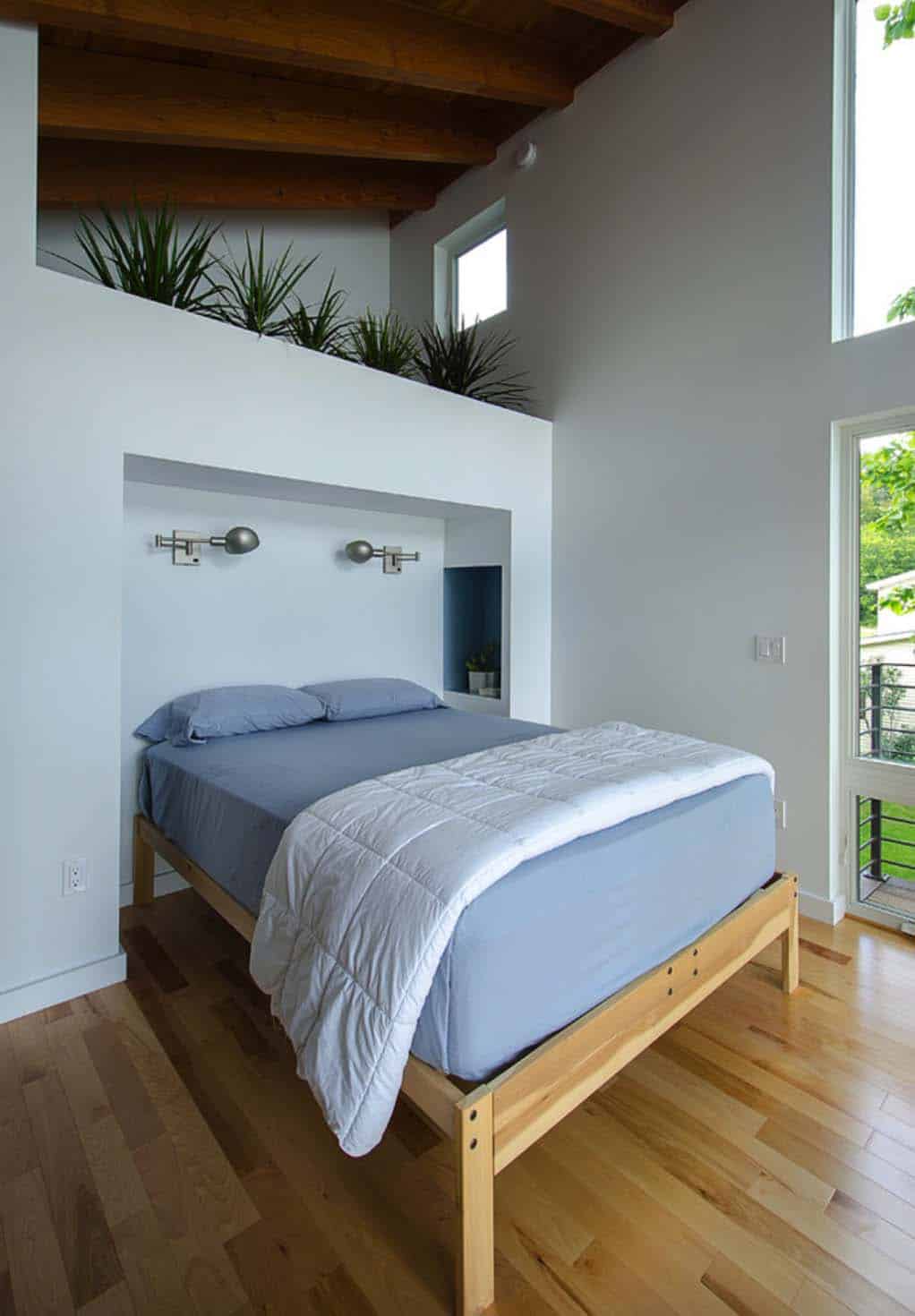
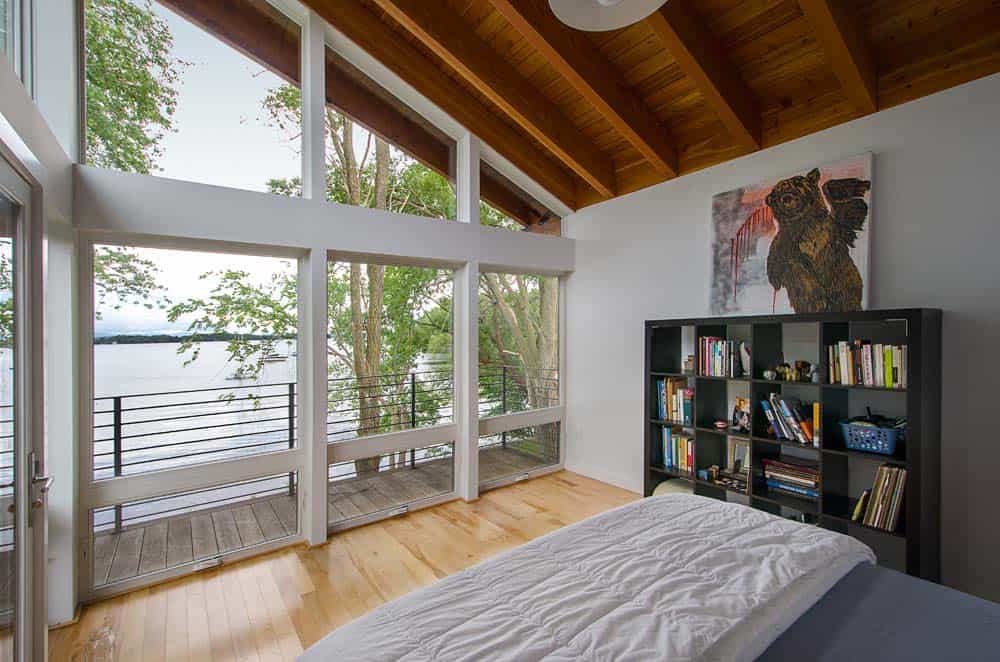
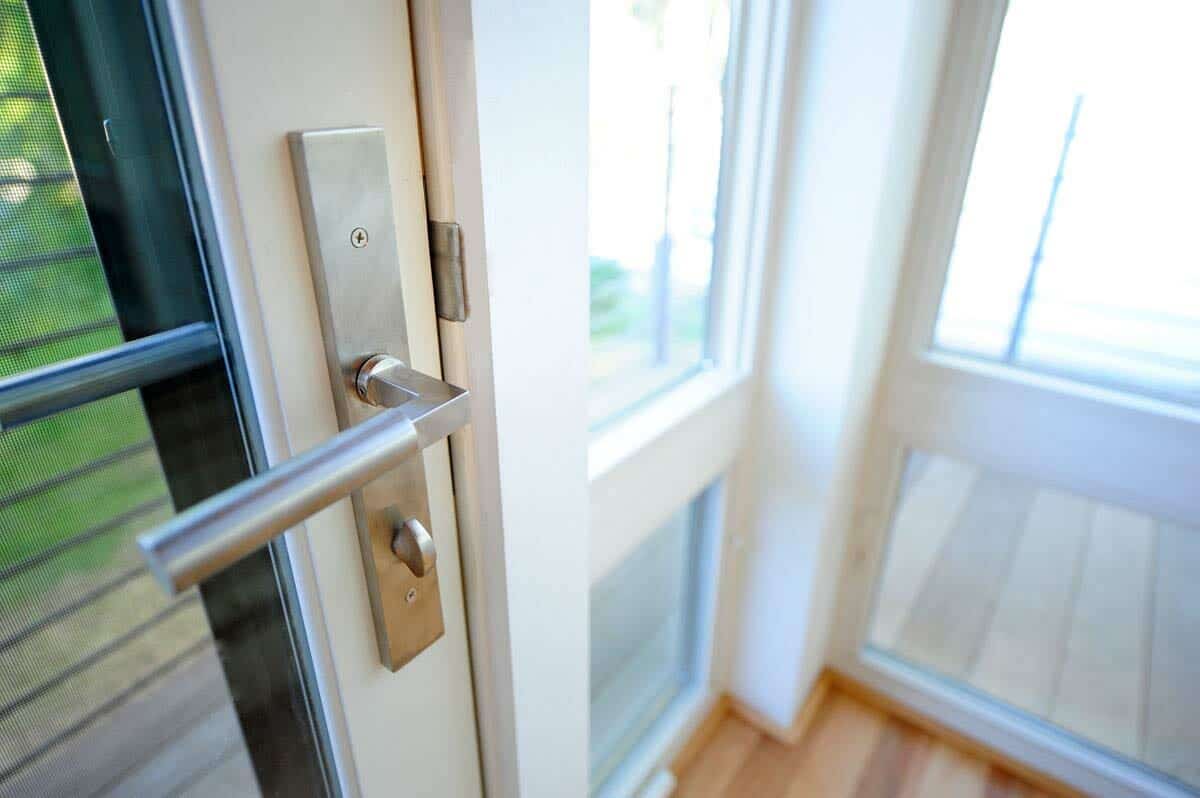

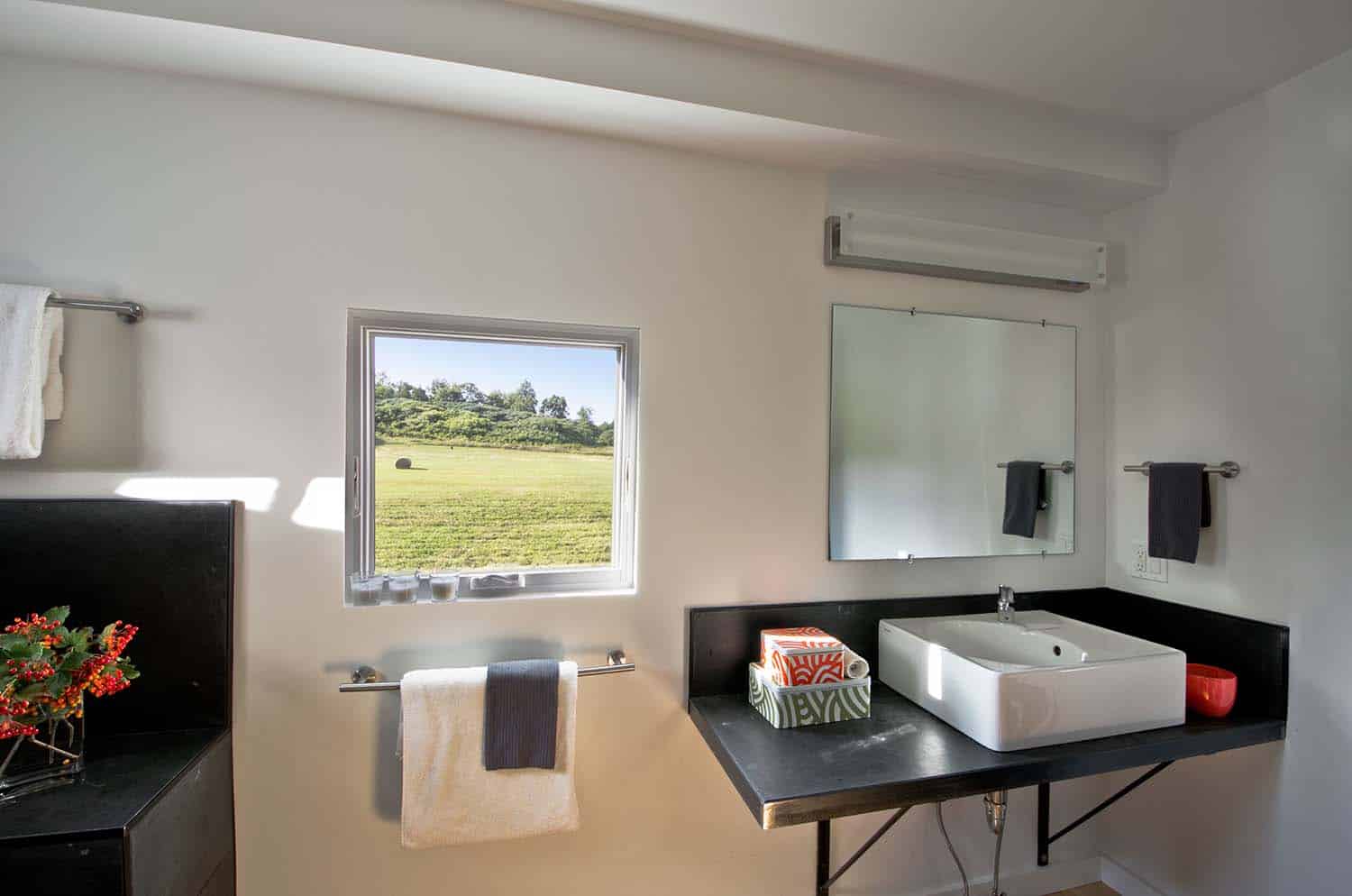
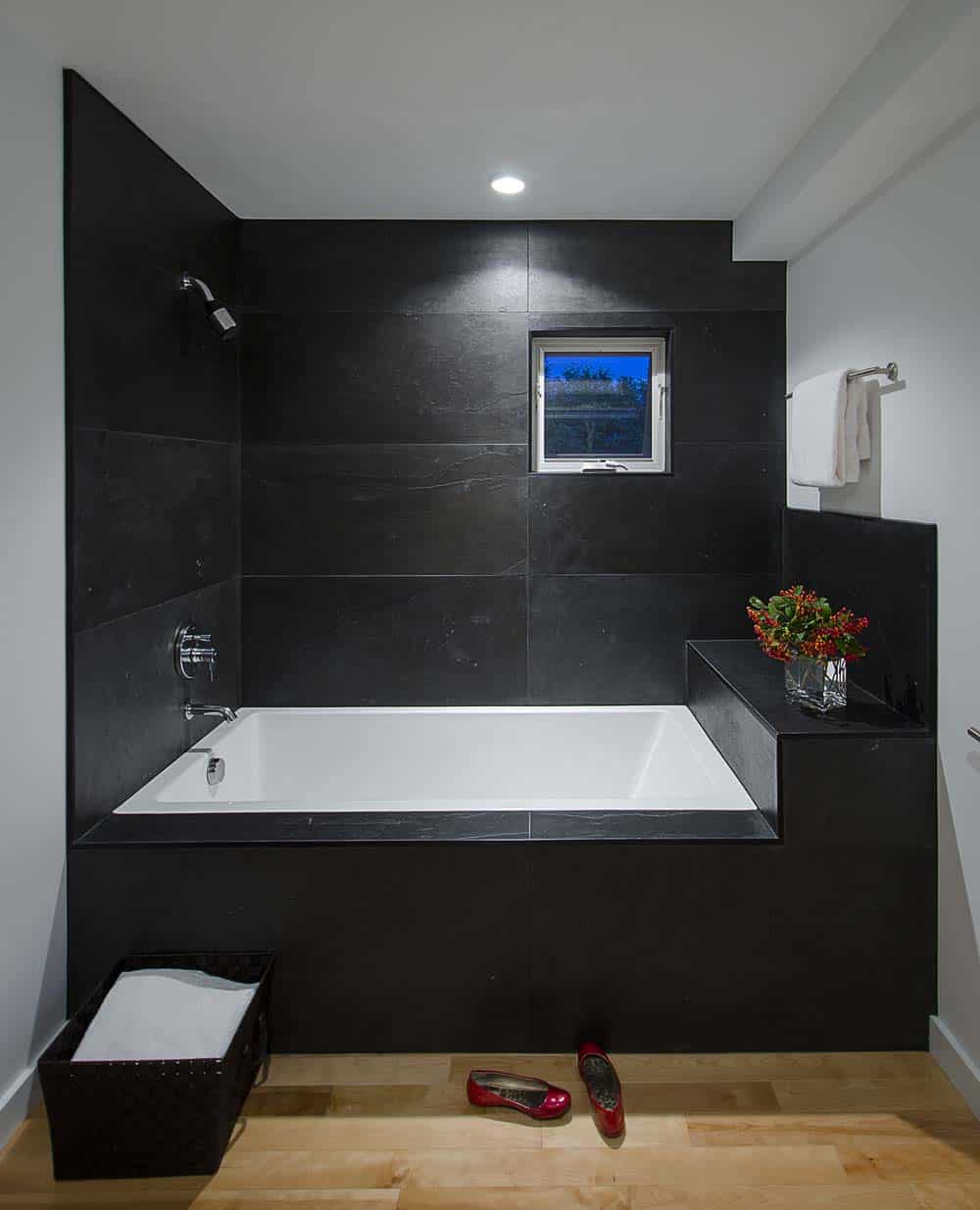

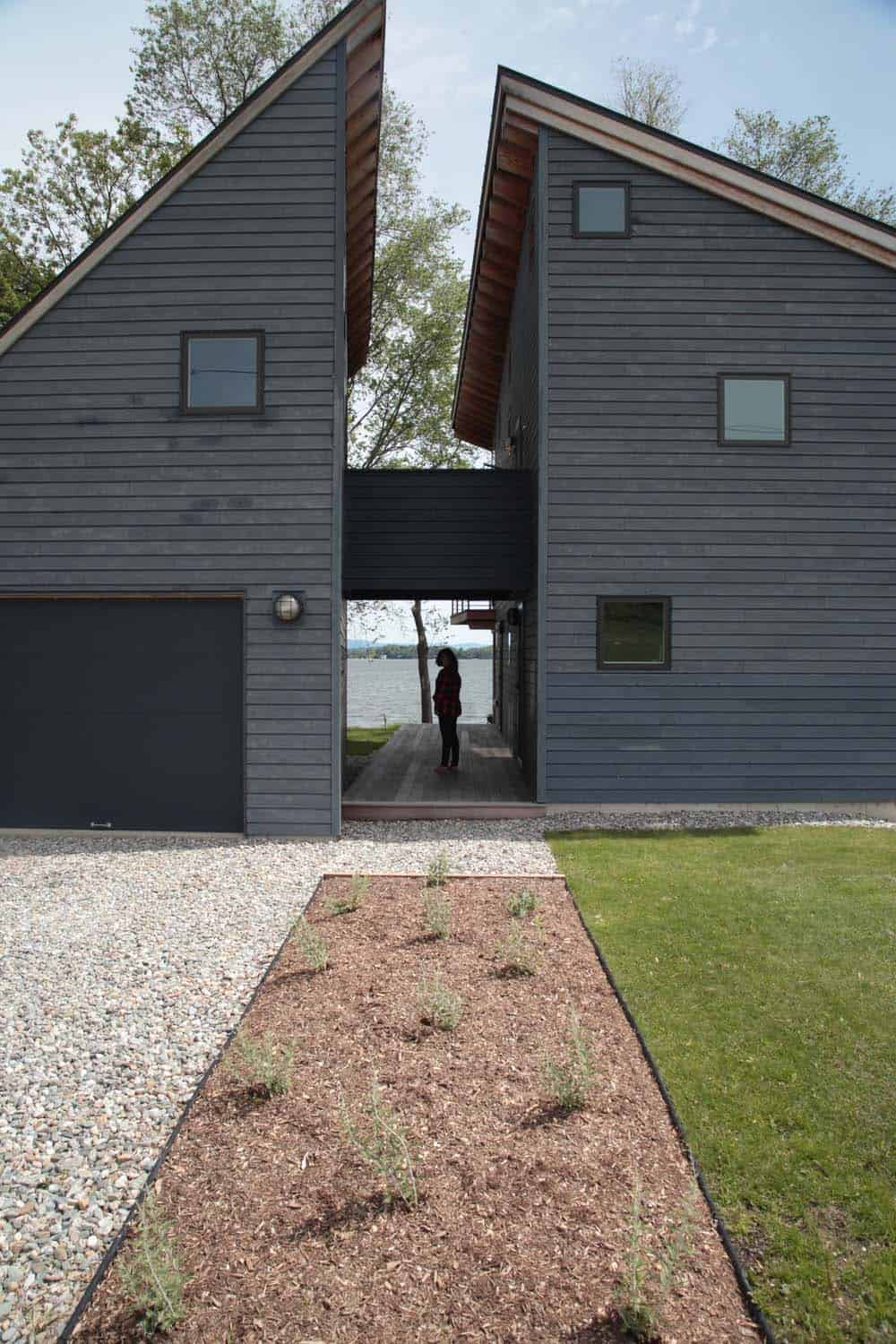
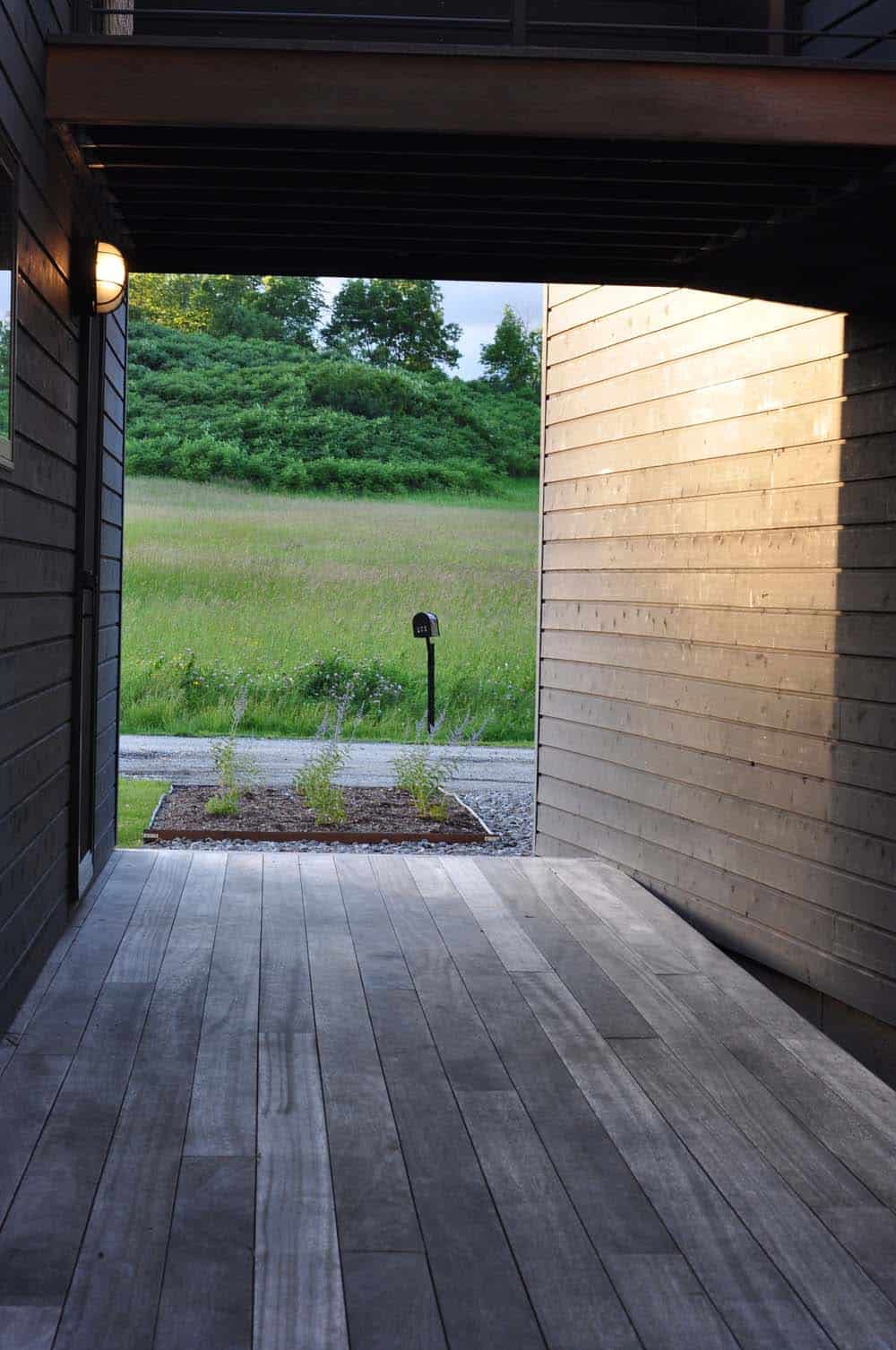

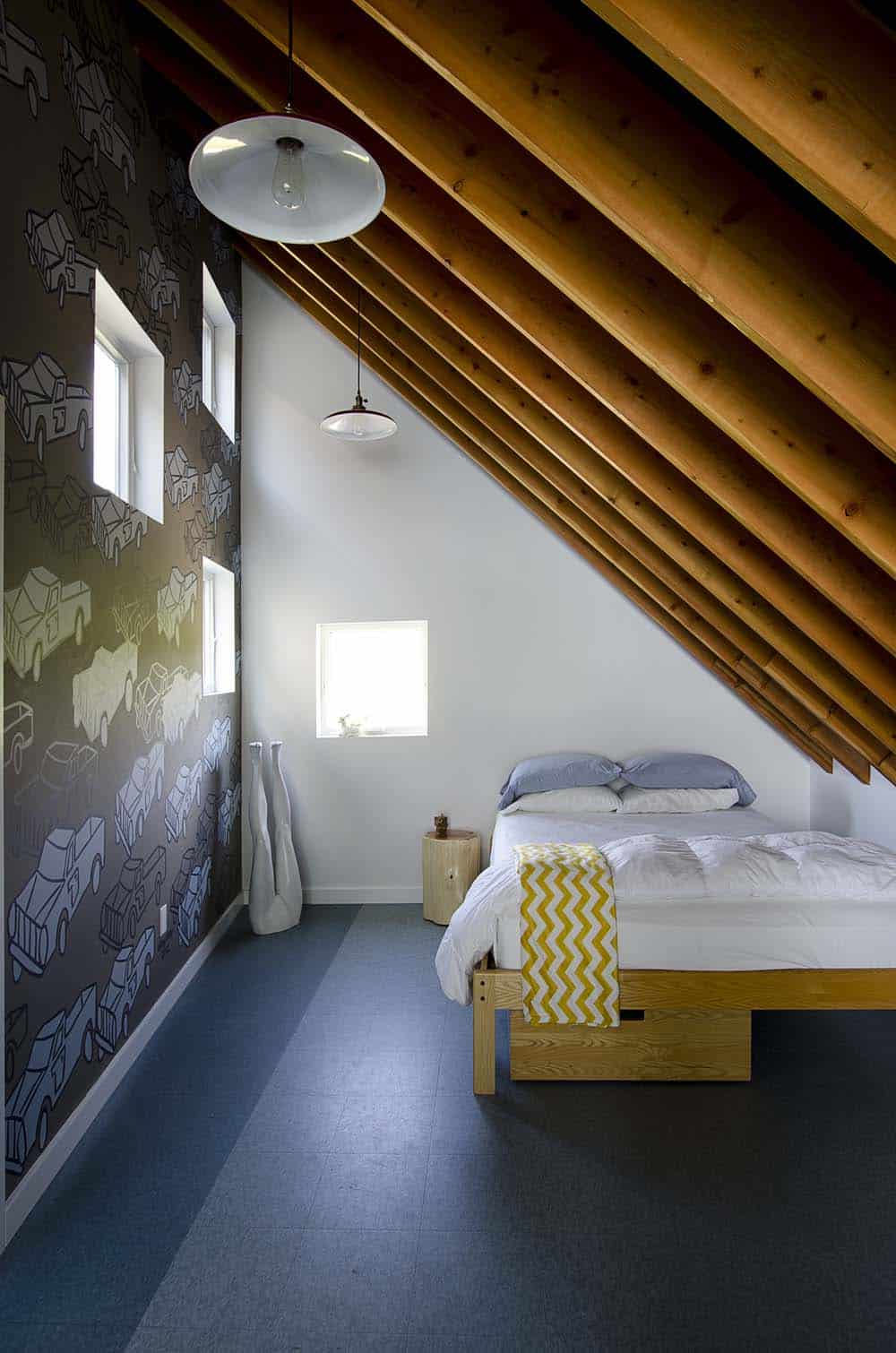
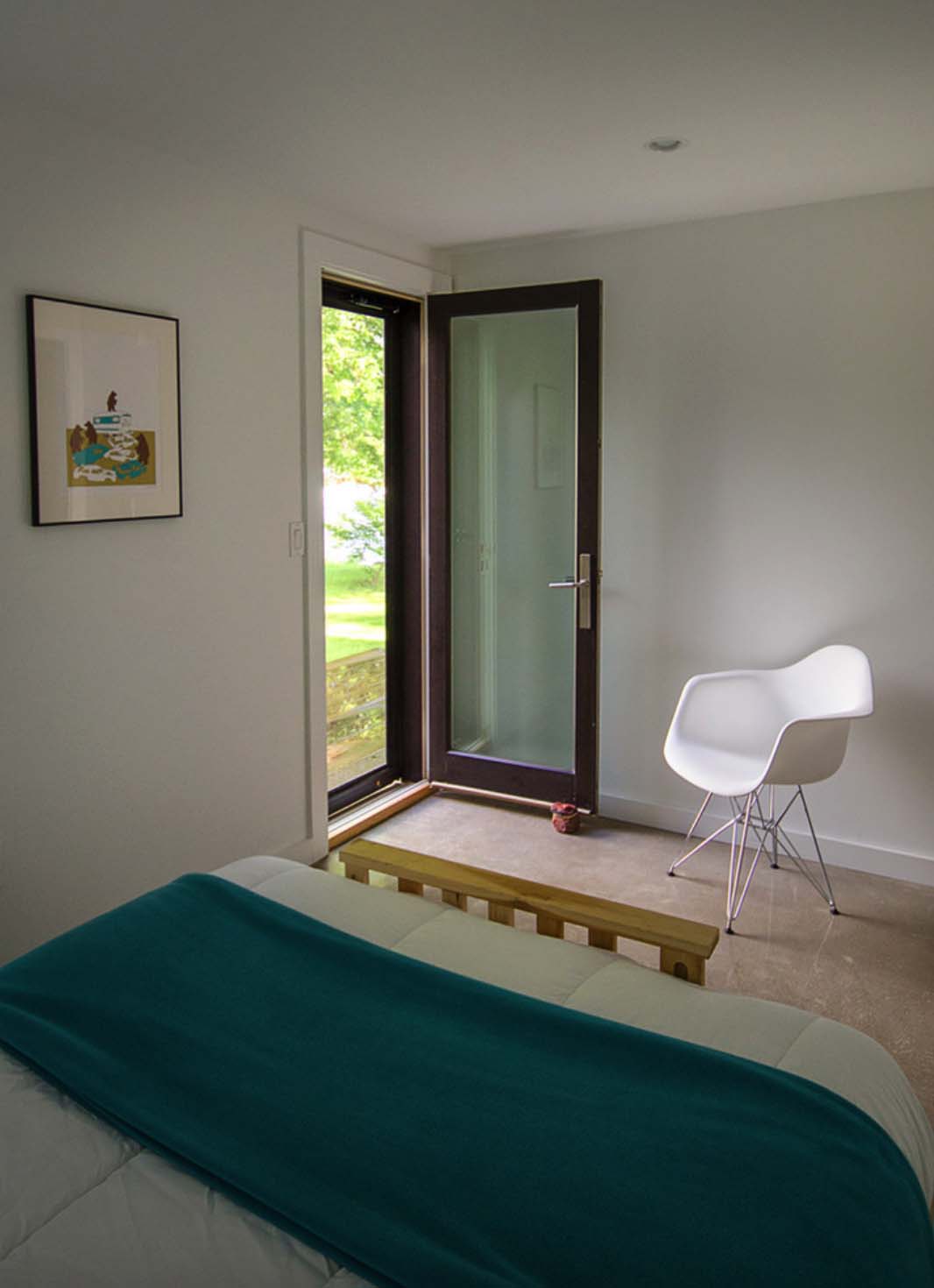
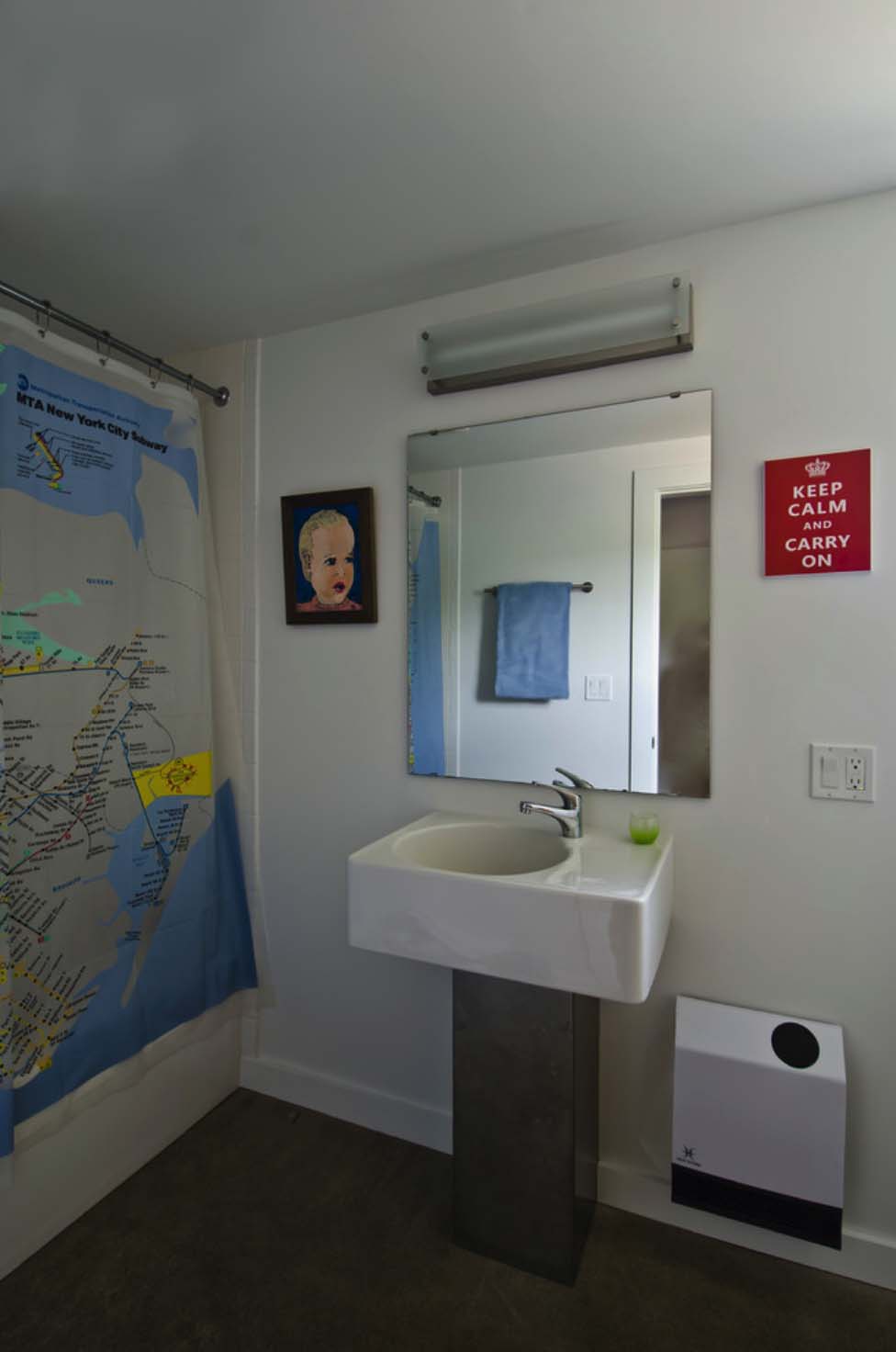
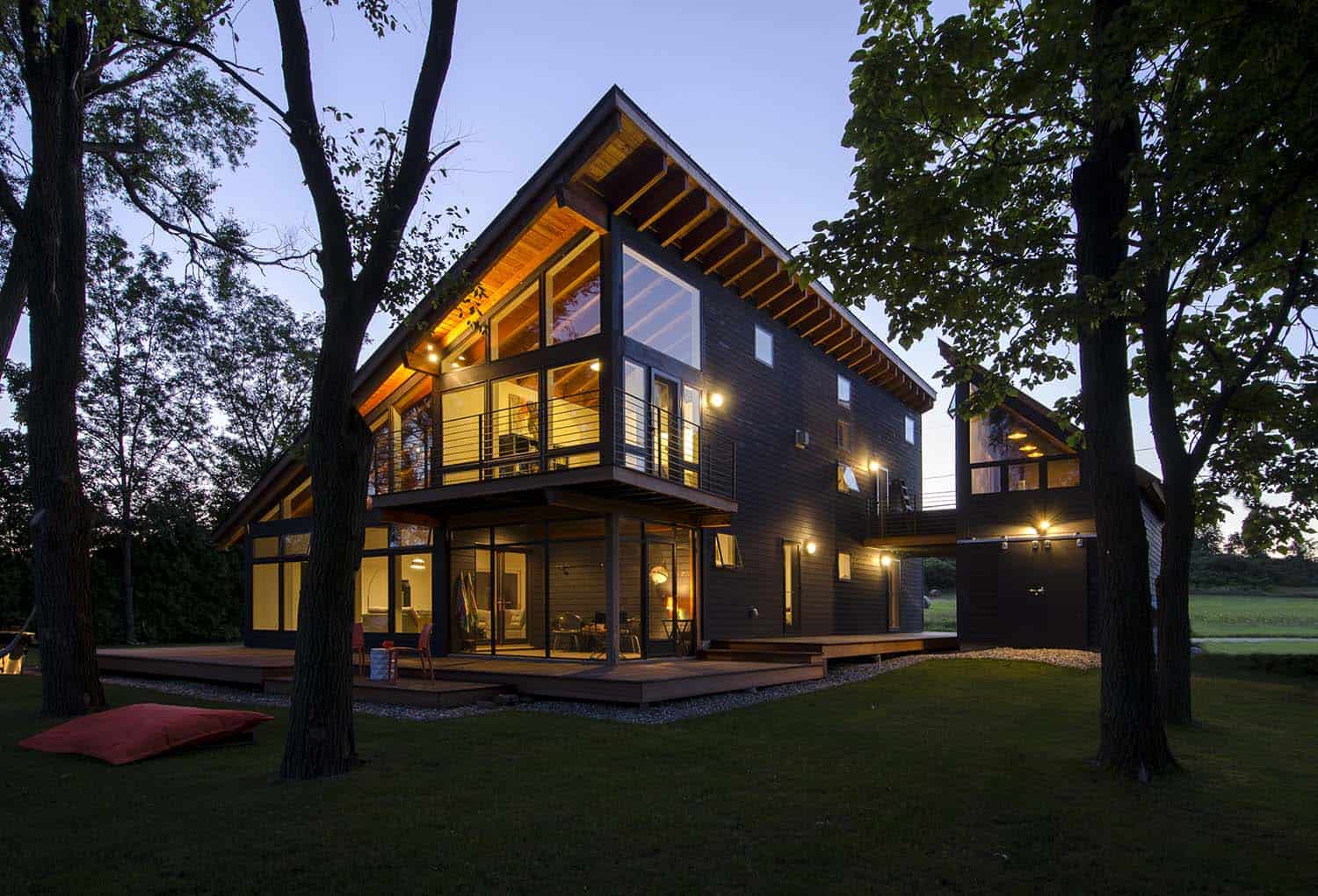
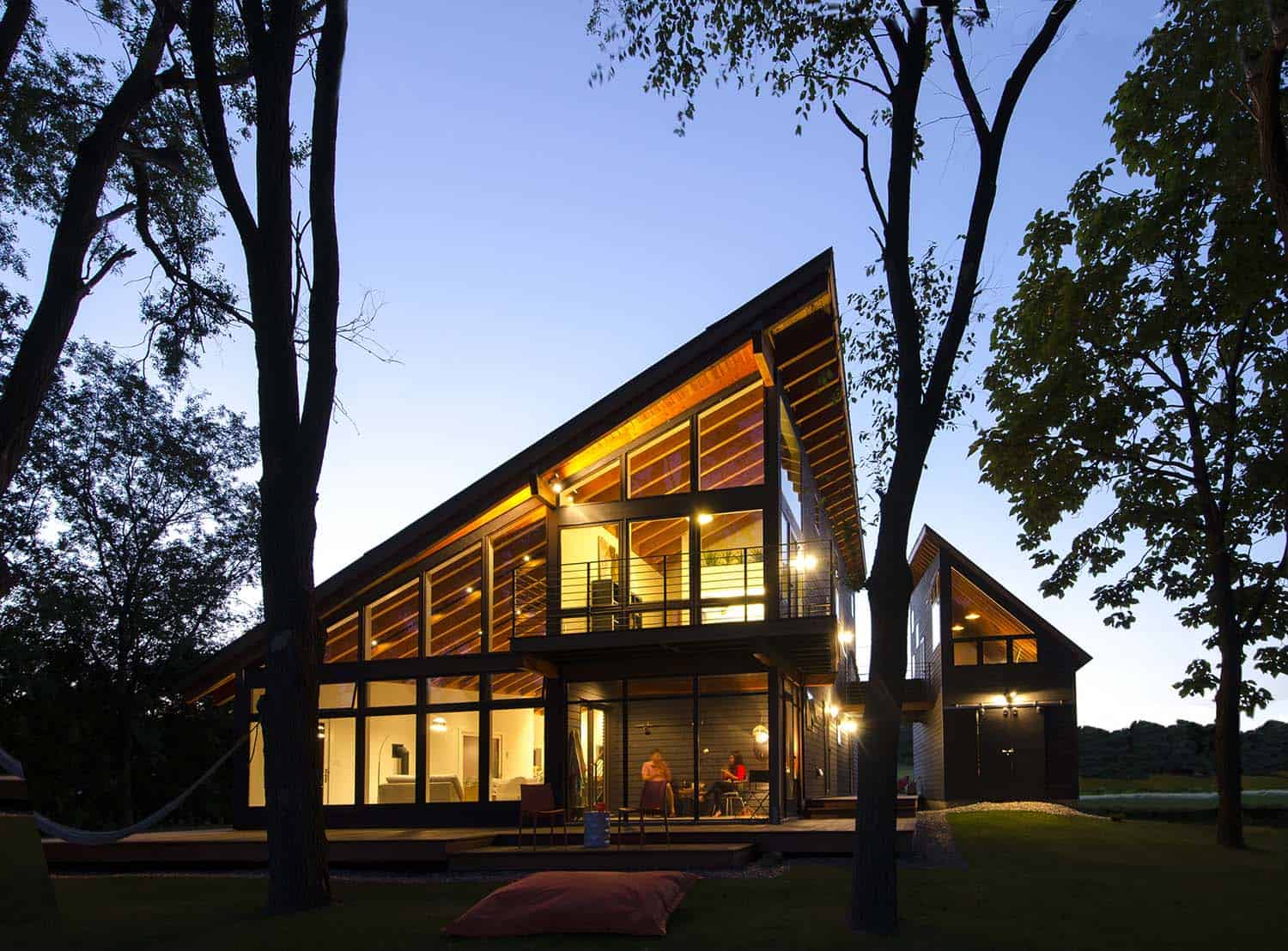
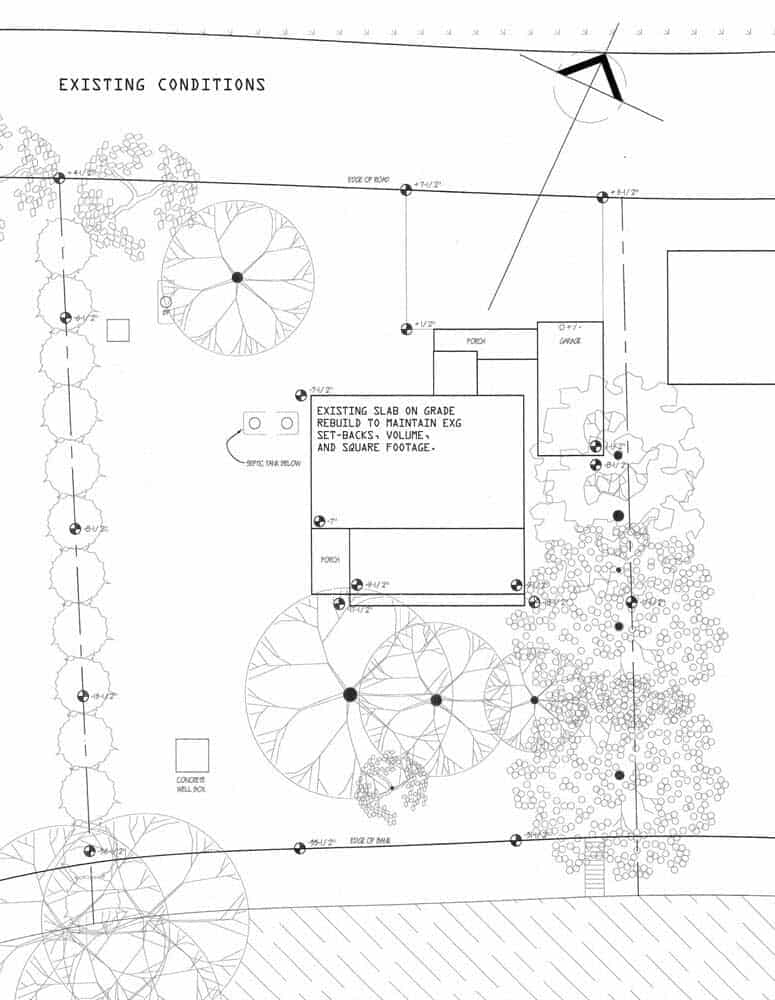
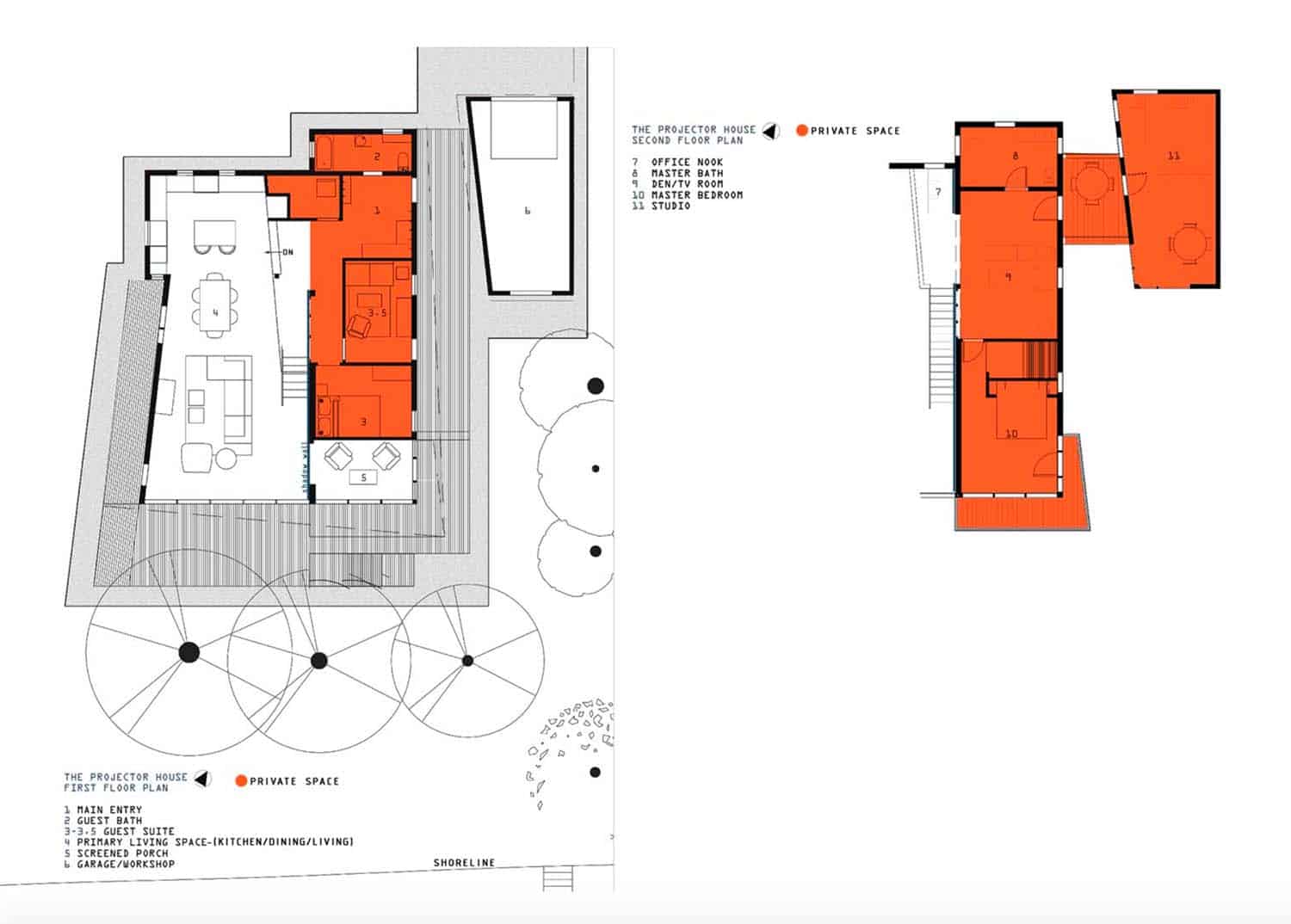
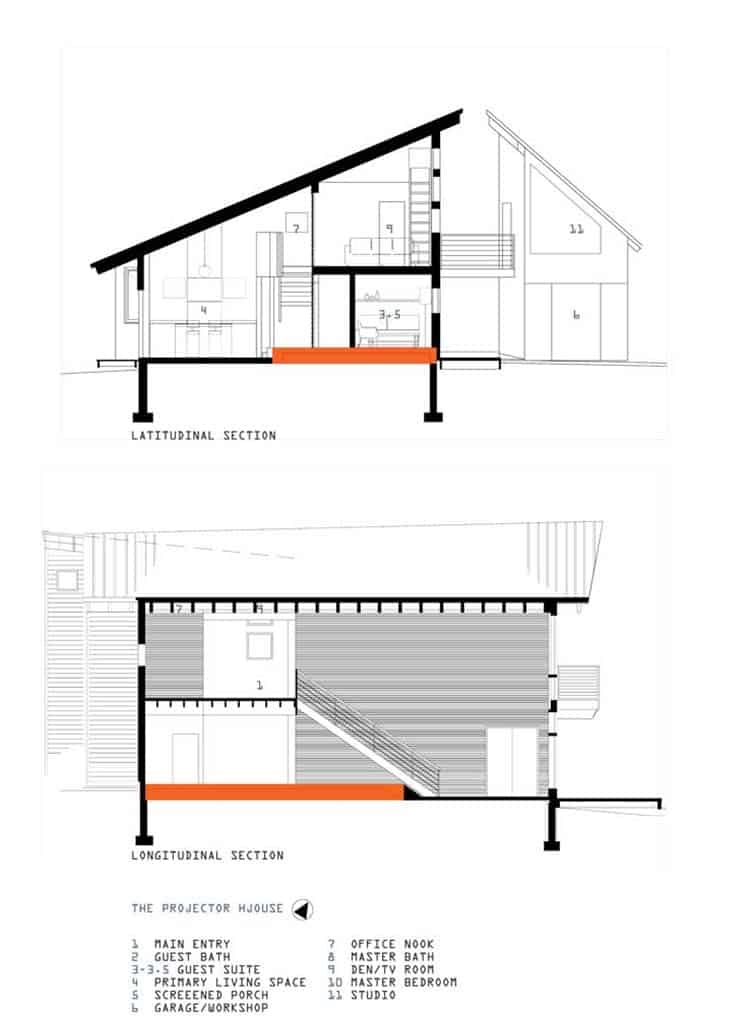
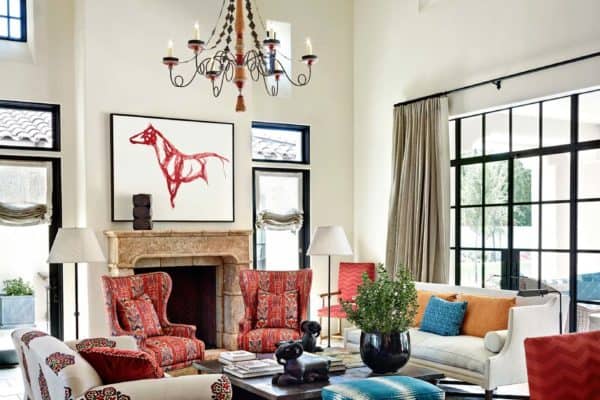

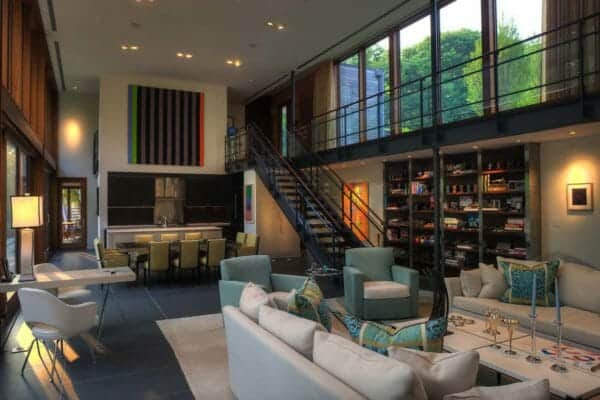
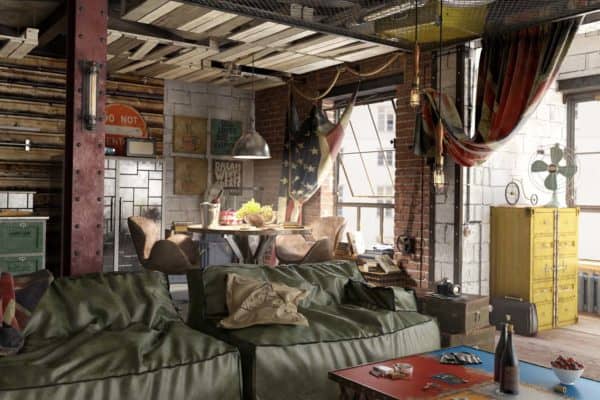
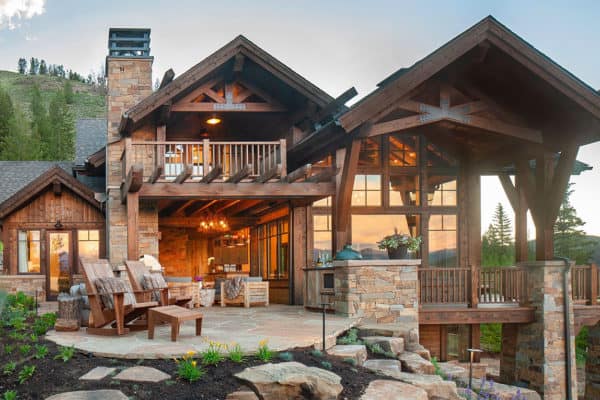

1 comment